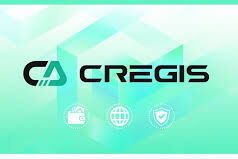In an era where financial innovation is accelerating, Japan Post Bank—the nation’s storied postal banking giant—is poised to make a groundbreaking move. By the end of fiscal year 2026, the bank plans to launch “DCJPY,” a blockchain-based digital yen that will allow users to trade tokenized financial assets like security tokens and NFTs—but with the safety net of traditional deposit backing.
A Glimpse into Nikkei’s Report on August 31, 2025
The buzz began on August 31, 2025, when Nikkei reported that Japan Post Bank is eyeing a 2026 launch for a digital currency that offers access to trading blockchain-based assets—from security tokens to NFTs (RootData). This caught attention not just for the technology involved but for the institution behind it—one of Japan’s most enduring and trusted financial organizations.
The Official Unveiling: DCJPY Defined
A few days later, more detailed official announcements followed:
- Japan Post Bank plans to roll out a deposit-backed digital yen—DCJPY—in fiscal year 2026, starting April 2026 (Nippon, The Japan Times, Reuters).
- The digital currency will be pegged 1:1 to the yen, and each DCJPY unit will be fully backed by deposits and linked to customers’ savings accounts (Nippon, Reuters).
- Development is handled in partnership with DeCurret DCP, a subsidiary of Internet Initiative Japan based in Tokyo (Reuters, Nippon).
- DCJPY will operate on a permissioned blockchain, ensuring the regulatory oversight banks require—and unlike conventional stablecoins, it will be subject to deposit insurance (Reuters, AInvest, 朝日新聞).
To quote the bank and its partner:
“Our tokenized deposit currency under consideration will offer instant, transparent transactions using blockchain technology.” (Reuters)
Why 2026? Timing and Scope
Fiscal year 2026 begins in April 2026, giving the bank plenty of runway to develop infrastructure, gain regulatory approvals, and pilot systems. With over ¥190 trillion in deposits (roughly US $1.29 trillion), Japan Post Bank’s scale ensures that the rollout isn’t just symbolic—it has real, widespread impact potential (Reuters, 朝日新聞, Nippon).
What DCJPY Brings to the Table
1. Instant Trading of Digital Assets
With DCJPY, customers can convert yen into digital tokens instantly, enabling swift settlements for:
- Security tokens (e.g., tokenized bonds)
- NFTs and digital art
- Fractional real estate investments
Traditional settlements can take days, but blockchain means near-instant execution and lower overhead costs (The Japan Times, 朝日新聞, Cointribune).
2. A Stable, Regulated Token
Unlike unofficial stablecoins, DCJPY is:
- Fully backed by yen deposits
- Covered by deposit insurance
- Operated on a permissioned blockchain
- Developed by a trusted bank and regulated entity
This provides security and familiarity, especially for risk-averse users (AInvest, 朝日新聞, Reuters, Cryptopolitan).
3. Democratizing Digital Finance
With over 120 million account holders, Japan Post Bank can:
- Open up digital asset markets to ordinary savers
- Provide a user-friendly app to convert and transact
- Offer access to tokenized investment opportunities previously limited to professionals (Cointribune, AInvest, Blockhead)
4. Government Use Cases
DCJPY isn’t just for individuals or investors:
- The bank envisions local governments using it for subsidies and public benefits, directly disbursed in token form (Nippon, Blockhead).
- This could underpin a new model of digital public finance, with streamlined administration and built-in auditability.
How DCJPY Compares with Japan’s Upcoming Stablecoin: JPYC
Shortly before these announcements, another development made headlines:
- A Japanese startup called JPYC plans to launch the first yen-pegged stablecoin, licensed to issue fully convertible tokens backed by savings and Japanese government bonds. It’s targeting an autumn 2025 release and aims for broader use, initially among institutional investors (Reuters).
DCJPY vs. JPYC:
| Feature | DCJPY | JPYC |
|---|---|---|
| Backing | 1:1 yen deposits; deposit insurance covered | Savings + JGBs; likely interest-generating |
| Platform Type | Permissioned blockchain (bank-controlled) | Public blockchain (open access) |
| Use Cases | Retail, asset trading, digital government use | Institutional, international use |
| Oversight | Highly regulated, bank/government-supported | Startup, regulated but more flexible |
They’re not direct competitors—they reflect two parallel paths: a regulated, bank-driven model versus an open, fintech-driven model.
The Bigger Picture: Why It Matters
In many ways, DCJPY signals a major shift in how traditional financial institutions view blockchain. Instead of sideline experiments, this is infrastructure being built as a core offering.
- Institutional trust meets modern tech—The union of a large national bank with blockchain can lower barriers to adoption among traditional users.
- Bridging financial services and public policy—Using DCJPY for subsidies or public payments points toward real-world utility, not just novelty.
- A case study in Japan’s incremental adoption of digital currencies—With Bank of Japan pilot programs and JPYC’s stablecoin plans, DCJPY shows that Japan is exploring all facets of digital yen possibilities.
Final Thoughts: What’s Next?
Here’s what to watch:
- Regulatory progress—Will Japan’s regulators endorse the plan smoothly?
- Pilot programs—How will rollouts unfold in early 2026? What use cases emerge?
- User adoption—How will account holders respond to converting savings into a digital yen for trading or payments?
- Interoperability—Will DCJPY remain siloed, or will other banks and networks integrate?
- Live use in government payouts—Will public institutions adopt DCJPY for subsidies or community payments?
In Summary
- Japan Post Bank plans to issue DCJPY, a blockchain-based digital yen, by fiscal year 2026.
- The token will be fully backed by yen, pegged 1:1, covered by deposit insurance, and linked directly to savings accounts.
- It aims to enable efficient trading of digital assets, facilitate public financial services, and open up tokenized finance to millions of users.
- It’s positioned amid broader shifts—including JPYC’s stablecoin and government digital yen pilots—as part of Japan’s evolving financial landscape.
As blockchain and regulated finance converge, DCJPY could very well become a blueprint for how banks adapt to the digital age—combining stability, innovation, and inclusion in one token.




























Tokenizing ¥190 trillion in deposits might actually reshape Japanese finance
This isn’t a crypto experiment, it’s institutional infrastructure
DCJPY seems built for speed and transparency
Instant settlement between real estate and NFTs feels futuristic
Do everyday users trust converting their money to digital form
Japan Post Bank is combining deposit insurance with blockchain
If governments start distributing subsidies in token form, DCJPY could transform public finance.
DCJPY being fully backed 1:1 by yen and covered under deposit insurance makes it feel safe
Turning your savings into a blockchain token tied directly to the yen? That’s a serious pivo